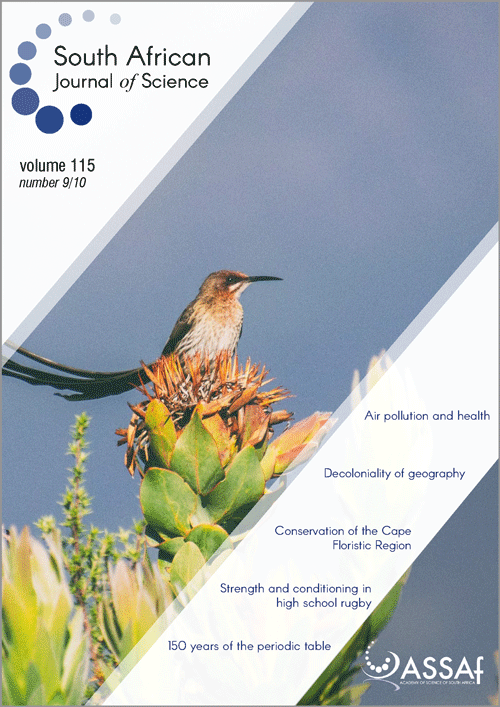Natural ventilation as a means of airborne tuberculosis infection control in minibus taxis
DOI:
https://doi.org/10.17159/sajs.2019/5737Keywords:
ventilation rate, airborne infection control, tracer-gas concentration, window configuration, transmission riskAbstract
Airborne infection control measures are used extensively in health-care settings to curtail the spread of airborne infectious diseases. Few such measures are applied in public congregate spaces outside health facilities, such as those associated with public transport. In minibus taxis – a popular form of public transport in South Africa – poor ventilation creates conditions that allow for transmission of airborne diseases, particularly tuberculosis. In this study, we focused on developing quantitative ventilation profiles for the 16-seater Toyota Quantum Ses’fikile model commonly used in the Cape Town metropole. We studied the ventilation rates achievable in an occupied taxi under varying operational conditions, such as driving speed and open window configurations, which were based on observations made during preliminary taxi journeys. Two open-window configurations were found to provide ventilation rates close to or exceeding WHO recommended per-person requirements for high-risk clinical areas and are therefore likely to be effective in reducing the risk of tuberculosis transmission.
Significance:
- The results obtained augment the limited data available on the role that natural ventilation can play in reducing TB transmission in minibus taxis.
- Ventilation rates were shown to depend on both the taxi speed and specific open window configuration, countering the notion that simply opening a random selection of windows provides adequate reduction in the transmission risk.
Published
Issue
Section
License

All articles are published under a Creative Commons Attribution 4.0 International Licence
Copyright is retained by the authors. Readers are welcome to reproduce, share and adapt the content without permission provided the source is attributed.
Disclaimer: The publisher and editors accept no responsibility for statements made by the authors
How to Cite
- Abstract 2405
- PDF 910
- EPUB 217
- XML 464













.png)